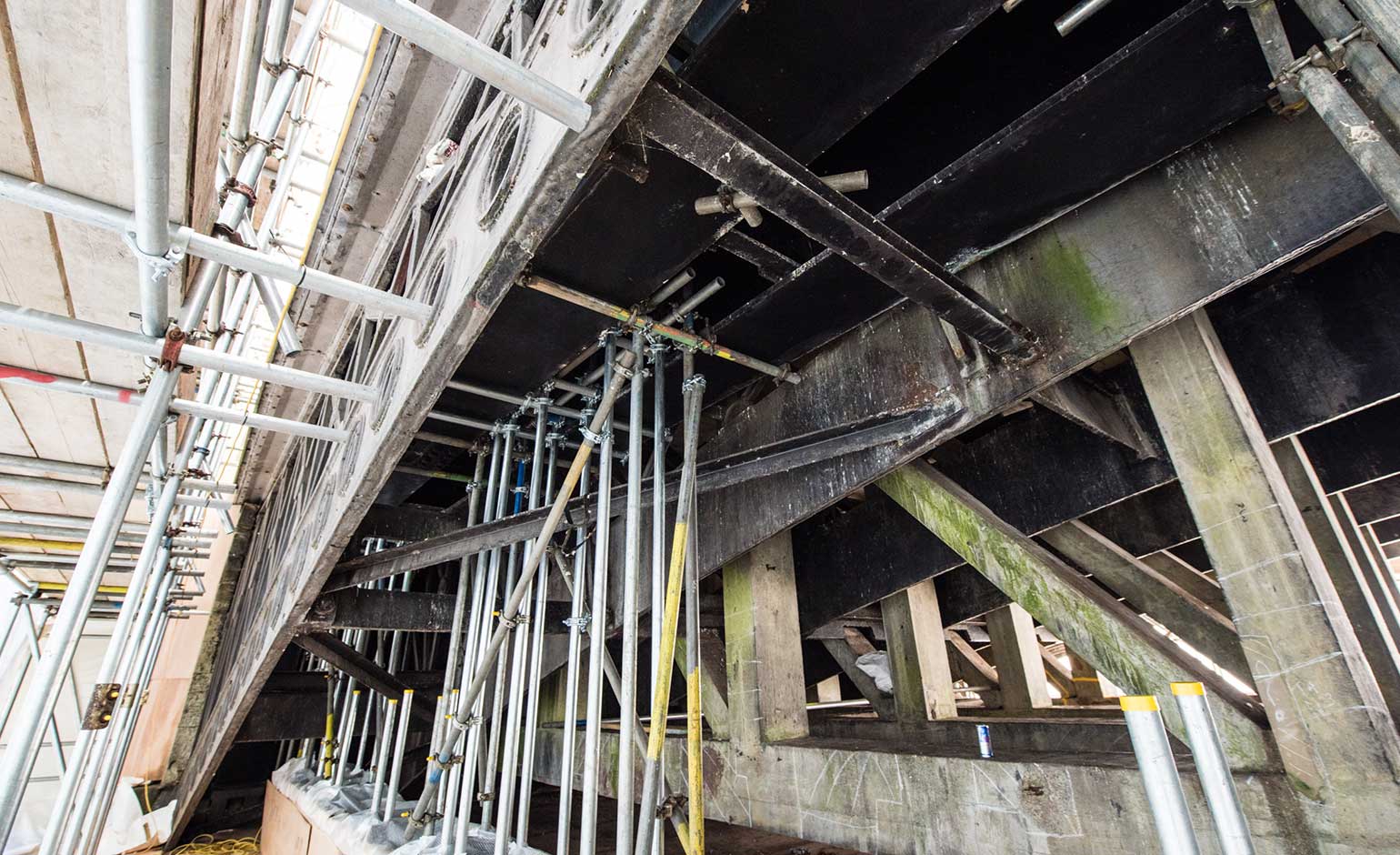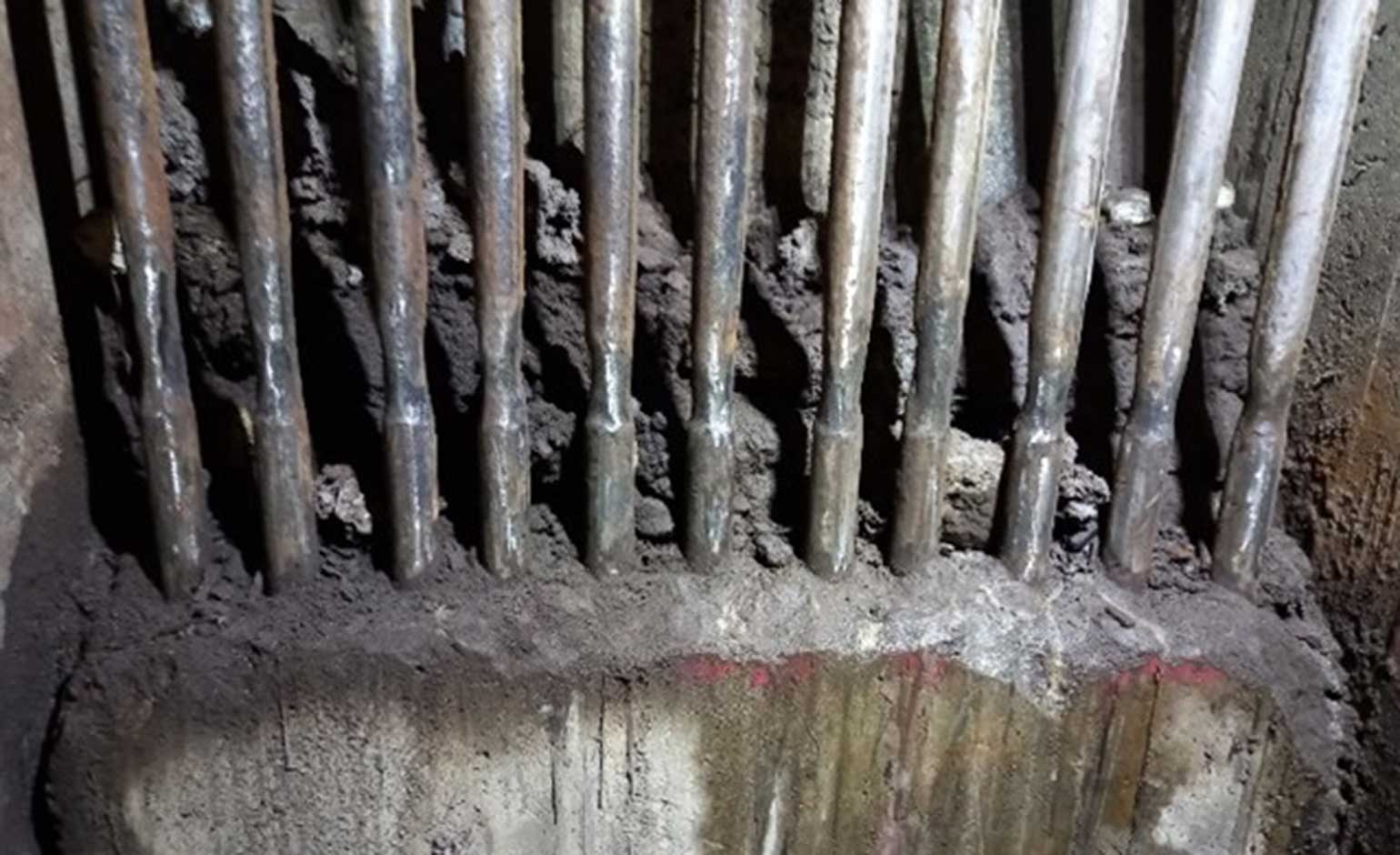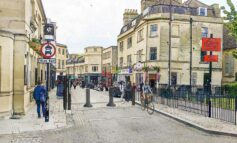An independent report has been published revealing the extensive challenges being faced during the ongoing repair works at Cleveland Bridge in Bath.

Underneath Cleveland Bridge | Photo © B&NES Council
The engineering report has set out the complex issues experienced during repairs to critical sections holding up the Grade II* listed structure.
Previously hidden, unexpected and severe corrosion on part of the structure was discovered by contractors carrying out repairs in January this year.
The corrosion was revealed when sections of concrete were removed from the hanger bars, which support the main trusses of the 200-year-old bridge.
The bars are not commonly found in bridges and the engineering solution to repair the unique hanger bars, which would allow the bridge to fully reopen, is proving a “technical challenge” without radically altering the structure.

Corrosion of the hanger bars once concrete had been removed | Photo courtesy of B&NES Council
Councillor Manda Rigby, cabinet member for Transport, said: “The ongoing safety of users of the bridge and those living nearby is of overriding importance and assessments have confirmed that the bridge can remain open using the current traffic arrangements.
“However, the issue is serious enough to risk structural failure of the bridge were it to reopen to all vehicles before repairs are carried out and if you read the latest report there is not an obvious fix to allow the bridge to reopen fully.”
Bath & North East Somerset Council has said the current traffic management at the bridge will remain in place.
Pedestrians, cyclists and cars can use the bridge under traffic signals and an exception has been made for emergency vehicles, which can access the bridge via a gate specifically for their use.
The bridge is supported by four concrete trusses suspended from hanger bars, which are suspended steel rods that hold up each truss.
These supports are needed to maintain the structural integrity of the bridge.
The hanger bars have been subject to visual examinations over a number of years, and a preliminary assessment from the technical team stated that they only required painting and cleaning.
However, while preparing to undertake work on truss four, tests at the base of the hanger bars identified the need for further investigation. The concrete was then removed, which revealed the hanger bars were severely corroded.
Engineers are now assessing an option for installing a bearing under the truss to support the weight of the bridge, but this needs detailed assessment because it will alter other load paths on the abutments and bridge.
The change of load path can cause structural elements to act differently, and these are sensitive to change because of the bridge’s age and design.
Careful detailed assessment and computer modelling is now progressing to find out if the bearing is a feasible option which will then inform the next steps for the repairs, anticipated in May.
The latest delays have not stopped other works which are continuing, with main concrete repairs to the deck and trusses, and these are expected to be completed within the coming weeks.



